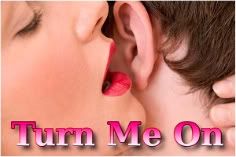
The information and advice from Ask Naughty Nurse Kimpy is for entertainment/educational purposes only and is not intended to be used as expert medical advice. It is not meant to replace the advice of your physician. All medical advice and information should be considered to be incomplete without a physical exam, which is not possible without a visit to your doctor.
October is Breast Cancer Awareness month. To do their part to raise awareness about breast health and breast cancer, Naughty Nurse Kimpy and her Fellow Pervs are devoting this post to education in addition to answering questions about breast health. Let’s all do our part to kick breast cancer in the heinie.
Before we delve into this week’s questions, Naughty Nurse Kimpy wants to make sure that all her readers know the current breast health guidelines. This information is taken straight from the Susan G. Komen Foundation’s website. It’s the top organization leading the fight to save the tatas, and their information is presented in a format that is simple, up to date, and easy to understand.
The very best way to minimize your risk for breast cancer is to:
Maintain a healthy weight;
Exercise regularly;
Limit your alcohol intake;
Minimize use of postmenopausal hormones (like hormone replacement therapy);
Breastfeed if you are able.
Virtually any woman, of any age, can get breast cancer. The older you get, the higher your risk, but if you’re as young as 20, it’s still possible to get breast cancer. Your healthcare practitioner can help you determine what your risk level is by asking you some questions about your medical history.
Ask your doctor which screening tests are right for you if you are at a higher risk (if you have a mother, sister, or grandmother who had breast cancer);
Have a mammogram every year starting at age 40 if you are at average risk (That’s nearly all of the rest of us);
Have a clinical breast exam at least every 3 years starting at age 20, and every year starting at age 40 (this can be done by either your gynecologist, general practitioner, or nurse midwife).
OK, so I have a breast cancer question. The women in my family are very susceptible to getting breast cancer, with 5 having died from it and my grandmother having had a double mastectomy.
I know that regular self exams can help with early detection the things is that my breasts always feel lumpy and I'm not sure how to tell possible cancer from my normal lumpy breasts or whether I am even doing my exam correctly.
Please help I want to know I am doing it right and am too scared to ask my male physician.
Naughty Nurse Kimpy applauds you for trying to be vigilant about breast cancer due to your family history. The thinking has recently changed about the importance of doing breast self-exams, however--it’s not currently recommended as a screening tool for breast cancer. Research has shown that the best way to find breast cancer in the early stages is by a mammogram and getting regular clinical breast exams.
Just because breast self-exam is no longer recommended, every woman should still be familiar with her breasts. Take time to know what they look like, and how they feel, so you can more easily spot changes/something that might not be typical for you:
Swelling, warmth, redness or darkening of the breast
Change in the size or shape of the breast
Dimpling or puckering of the skin
Itchy, scaly sore or rash on the nipple
Pulling in of your nipple or other parts of the breast
Nipple discharge that starts suddenly
New pain in one spot that doesn’t go away
You find a new lump or change that feels different from the rest of your breast.
You find a new lump or change that feels different from your other breast.
Feel something that is different from what you felt before.
In general, breast tissue is naturally a little bumpy. The important thing to note is whether or not this bumpiness occurs throughout your breast. If you feel an isolated lump that seems larger or harder than the rest of your breast tissue, you should get it checked out by your doctor.
On a final note, Kimpy suggests that you try to find a physician--male or female--with whom you feel comfortable enough to ask the embarrassing questions, if at all possible. It’s so important to have a good relationship with your doctor; she can’t stress this enough.
dear naughty nurse, I have these small lumps that are on the sides of my nipples on both breasts. I have had them for awhile and I don’t know if I should be worried. Should I have my doctor check?Jen - The human body is truly an amazing thing. The bumps you’re seeing on your nipples are most likely Montgomery glands. These glands secrete a slightly oily substance that keep nipples clean for breastfeeding babies. This is why women are advised not to use soap on their breasts after giving birth--because the body already has a mechanism for keeping them clean but not dried out. (If only our children’s bodies were self-cleaning!) This page on breast anatomy includes an explanation of Montgomery glands.
If you’re a research geek like Kimpy and myself, you might like to read the abstract of this study which looked at newborn response to the odor of the substance created by Montgomery glands. The babies responded to the odor of lactating women more than any other odor they were presented with. The researchers concluded that in addition to cleansing and moisturizing the areolae, the substance secreted from the glands contributes to the communication mothers and babies share via their bodies.
On both of my breasts, I have little baby hairs, hardly noticeable, like many women do. However, I think I have rather large pores. Of course, with little hairs, that's "normal" I assume. But, these pores seem different. It's as if there's "stuff" in there.Jen - It sounds like you’re describing Montgomery glands. They can be raised, and might give the appearance that something’s inside them that needs to get out. These bumps are perfectly normal and serve the purpose mentioned above. Just let them be and they’ll happily do their job in the background : )
Some of these pores, especially around and under my nipple area, are dark, and if I wanted to squeeze them, something would come out (like when you squeeze a pore on your face). I don't want anything to get infected, so I leave it alone. I also sometimes get these little cyst like pimples on my breasts, mostly on the outer tops. I say cystic pimples meaning they're under the skin. They get inflamed and really red. I had one once when I had a gyno appointment scheduled, so I asked her about it. She touched it, asked how long I've had it, etc. She prescribed me an antibiotic and it took the inflammation away. If the pus ventures to the top and forms a white head, I'll drain it and put something on it to keep everything clean. I myself am very clean. I shower and wash myself daily, wash my clothes, bra, etc. Do you have ANY idea what this could be? I'm 21 and these things on my breasts have been there since I can remember, at least 17.
I also have PCOS, do you think this can be a symptom of that? Or are these little dark pores just clogged and is just something that happens? Thanks so much
As for the pimples on your breast, I suggest talking to your doctor about them.
Kimpy - I agree with Jen about the Montgomery glands. As for the pimples? Women with Polycystic Ovary Syndrome (PCOS) experience higher levels of the male hormone androgen circulating in the bloodstream. One side effect of androgen is acne. My guess is that the acne is most likely related to your PCOS.
It sounds like you’re doing a perfect job keeping them your breasts clean, and draining the pimples appropriately when they get infected or irritated. It might be worth it to try a mild anti-acne formula on the pimple when it appears, to see if that makes a difference for you. If not, I recommend that you see your gynecologist again to see what she would recommend.
I have a question regarding nipple piercings: how would they affect breast feeding?
I don't have nipple piercings, but I'd like them, so I'm curious...
Kimpy - I’m starting to sound like a broken record, but Jen’s absolutely correct. The jewelry poses a choking hazard for the baby, so you shouldn’t breastfeed while wearing it. You can check with your piercer for guidelines on this if you ever decide to get your nipples pierced, but the La Leche League’s information is always a great resource.
I don't know if this is actually a problem or not but I feel like I should be somewhat concerned about it. One of my nipples is not inverted and the other is. The inverted one sort of lactates a bit. I'm only eighteen so I didn't even know that was possible since I thought breastfeeding really only occurs when you have a child. Is there actually a problem and I should check it out or...? Anyway, thank you so much for your column. It's really helped me so much!Jen - As with any body part, there is a huge variation among women in their nipples and breasts. Some nipples may be flat or inverted, yet stand out when cold or aroused. Sometimes inverted nipples are a problem for breastfeeding, and sometimes they’re not. Very often the action of a baby sucking is more than enough to get the nipples to stand out. Generally, breastfeeding experts no longer recommend that a mother try to evert her nipples pre-natally. Additional information about inverted nipples can be found here. There are pictures in the nipple gallery we linked to above, which show different levels of inverted nipples.
Kimpy - I heartily concur with Jen. In women who haven’t been pregnant or breastfed before, discharge from your nipples is unusual. I recommend that you follow up with you doctor on that one.
Also? Thank you for your kind praise about ANNK. I’m so glad you’re enjoying the posts.
Do you have a question for Naughty Nurse Kimpy? Click the banner below, fill out the form, and get your answer in the next installment of Ask Naughty Nurse Kimpy.





















0 comments:
Post a Comment